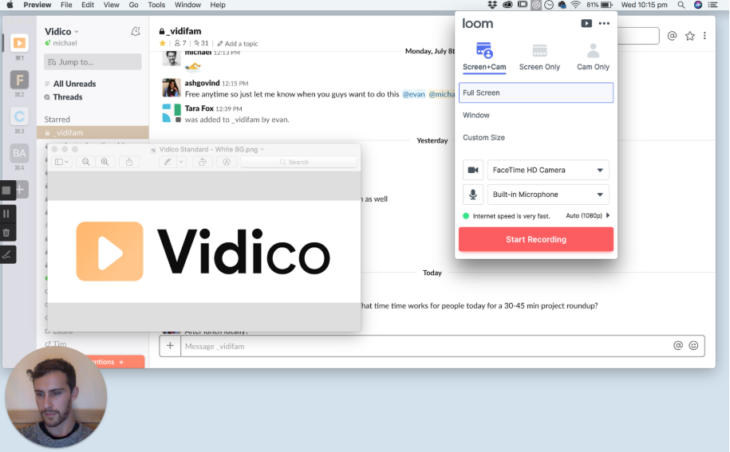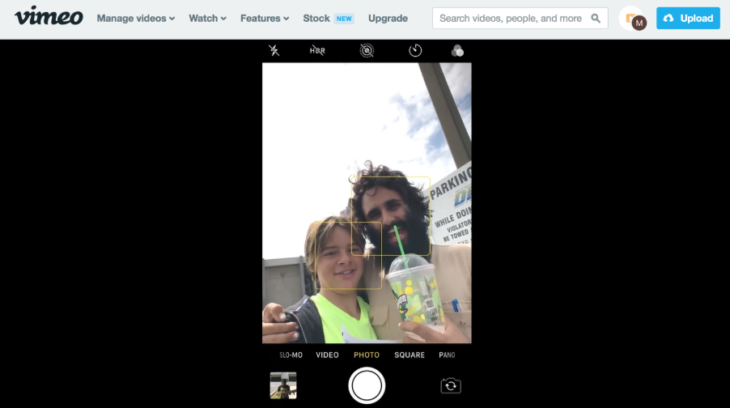First-Person Broadcasts:
Telling your story directly to the camera resembles an engaged 1:1 conversation that you’d have with a friend or family member. Add emotionality to the mix, and this direct format of speaking someone directly into the camera is extremely engaging (and quick to produce).
We see this being implemented widely across Linkedin, but are also looking forward to more video conversations happening internally too — think your Slack feed, or a quick recap from your manager to save time in meetings.
We’re amped to see the first-person video really take off in the workplace — think what difference this will mean to teams that work remotely!

Loom is great for the first-person video recording
From a production perspective, this type of content is quick and easy to produce but has a huge upside when it comes to learning and education. We think everyone could benefit from producing and engaging with 1st-person video content.
Typography, Sound-Off & Accessibility
Video is continuing to make up the clear majority of internet traffic — consumers and businesses can’t get enough of it. Though with more and more content, comes considerations like: how will the video retain value in sound-off environments, social feeds, and conference screens where there’s no audio to help tell the story?
According to Vidico, integrating text into the narrative instead of leaving it as a simple afterthought is necessary. If you can work on creating a harmonious relationship between your designs, and your copy on-screen, you’re really ahead of the curve and are maximizing the reach you can have with your content — both online and offline.

Text is always essential in storytelling
We’re excited by this trend not only because it’s a step toward making your video content accessible, but also because better captioning means meeting your audience’s needs where ever they are. There’s both a win from the marketing point-of-view and for the viewer experience.
Vertical Video
Back in 2017, the number of mobile video views overtook the amount of video consumed on desktop (Netflix included!) .It might not feel all that surprising considering how much time we spend on our phones, but that’s a pretty incredible statistic.
With more and more people watching content in a vertical frame, there are some really interesting creative opportunities that arise from a video production perspective. Our quick ideas are:
– The vision of apps — and having this vision cut to real-live footage. Our mobile phone usage is highly personal, so having audiences see this is super cool.
– Strange angles — like a camera coming out of your pocket or being left on a seat.
– Realism — the lo-fi nature of the content could yield really convincing docu-style narratives that appear very real.

We’re absolutely ecstatic for the remainder of 2024 — with apps like Ficto (for short vertical video mobile series), we are seeing a very interesting time in the world of video production and video marketing.
